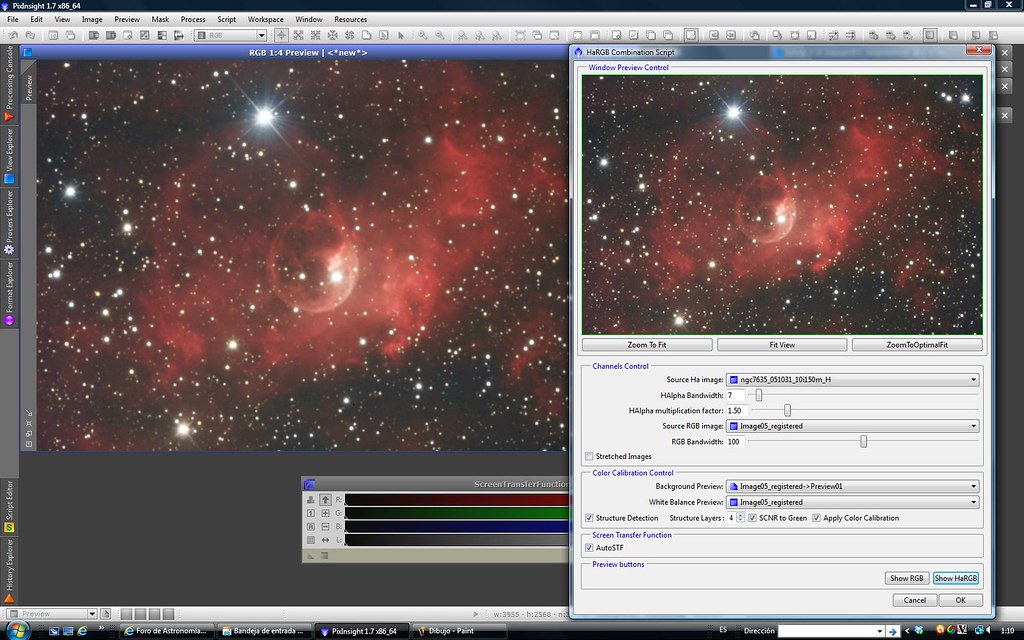Hi:
Perhaps you can try a HaRGB Combination script that I have developed.


The script is very simple to use:
In Control Channels we choose the Ha and RGB images, the filters bandwidth and the Ha multiplication factor.
You will realize that lowering the RGB Bandwidth fewer Ha passes down and viceversa, but the differences are not very evident.
The multiplication factor is more important because it will increase more or less the intensity of Ha, if we have a noisy channel we can not multiply much, if there is more signal we can increase multiply factor (in Harry's example up to 4) .
In Color Calibration Control we can choose whether or not to color calibrate the final image. Uncalibrated is selected by default for script to go faster. Checking Color calibration will calibrate the final image, for it, we will choose a preview of the background and a preview (or the entire RGB image) for white balance that you PREVIOUSLY defined in the RGB image. Depending on the image we choose Layers Structure detection or not. Finally, we can apply or not SCNR to green to finish calibration.
Checking AutoSTF we can apply an AutoSTF when we use a linear images, otherwise we would not see anything. In the case of combining with stretched images you must uncheck it.
Show Buttons. Show HaRGB and RGB buttons allow us to see the RGB and the HaRGB combination, both buttons open the console while working, do not touch the script until it closes the console and display the images, especially HaRGB Show takes a while, so don't be impatient as Pi can do strange things.
I put the script in a zip.
I would like to see results, and tell me if there is any fault, or if I can improve or what will happen.
Silvercup.
Edited again: Image Credits Jim Misti.